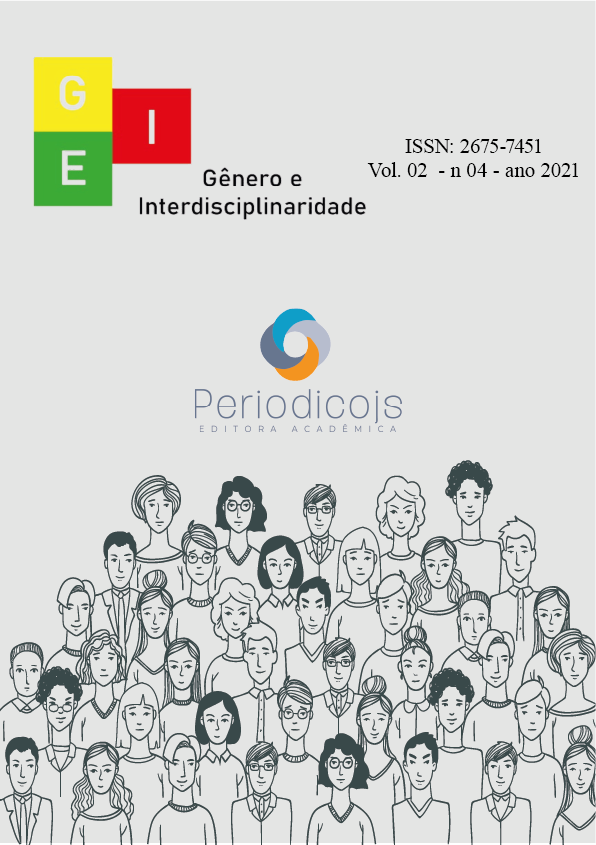Abstract
The 21st century is undoubtedly marked by several transformations in all areas such as, for example, economic, cultural, social, educational, etc. These changes affect the way in which personal relationships are carried out and their consequences, above all, in the context of the classroom in terms of teaching-learning and in the student-teacher link. In this context, the school, the main driving force of these transformations, together with the teacher, begin to take on new challenges that promote the protagonism of students in the construction of their own learning in the face of the technical-scientific-informational revolution. Thus, this article aims to discuss the importance of music as a didactic-pedagogical device in the teaching of Geography in the semi-arid context, based on the music of Luiz Gonzaga and Humberto Teixeira entitled “Asa Branca” composed in the 70s and , which to this day, is considered one of the greatest classics of Brazilian music. To carry out this study, the bibliographic research methodology was used, using the most recent works on the subject on websites such as: Google Academic, SciELO, etc. It was found that music is an important didactic-pedagogical device to work with themes and concepts of School Geography, since, from it, it is possible to work on various themes and address the socio-spatial context of the geographic area in question, especially about the semiarid in order to contribute to the formation of the subject with regard to their emancipation and protagonism, thus enhancing their knowledge base that allows them to create their own conceptions and supports and be an agent promoting the transformation of the environment in which they are inserted, thus , meeting the principles and objectives that dispose of the competencies and skills of the Common National Curriculum Base (BNCC). Thus, music is an important didactic-pedagogical device to be added to geography classes, as it enables the student to build their knowledge through other languages, in addition, it streamlines the educational process, making it more attractive and meaningful.
References
______. Base Nacional Comum Curricular. Educação é a Base. Brasília: MEC, 2018.
BUENO, R. J.; SILVA, A. P. Educação para a Convivência com o Semiárido Brasileiro. In: JESINE, E.; BATISTA, M. do S. X.; MOREIRA, O. de L. (Orgs). Educação popular e movimentos sociais. João Pessoa: Universitária/UFPB, 2008.
CAVALCANTI, L. S. Ensino de Geografia e diversidade: construção de conhecimentos geográficos escolares e atribuição de significados pelos diversos sujeitos do processo de ensino. In: CASTELLAR, S. (Org.). Educação geográfica: teorias e práticas docentes. São Paulo: Contexto, 2005, p. 66-78.
COSGROVE, Denis. A Geografia está em toda a parte: cultura e simbolismo nas paisagens humanas. In: CORREA, Roberto Lobato; ROSENDAHL, Zeny (Orgs.). Paisagem, tempo e cultura. Rio de Janeiro: EdUERJ, 1998. p. 92-123.
CORRÊA, Roberto Lobato; ROSENDAHL, Zeny. Literatura, música e espaço: uma introdução. In CORRÊA, Roberto Lobato; ROSENDAHL, Zeny (Orgs.). Literatura, música e espaço. Rio de Janeiro: EdUERJ, 2007. p.07-16.
FREIRE, P. Pedagogia do oprimido. 47 ed. Rio de Janeiro: Paz e Terra, 2005.
GONZAGA, L. TEIXEIRA, L. Música – Asa Branca. Disponível em http://www.vagalume.com.br/luiz-gonzaga/asa-branca-volta-da-asa-branca.html. Acesso em: 04/07/21.
MUNIZ. A. A música nas aulas de geografia. Uberlândia: Revista de ensino de Geografia, 2012. Disponível em: http://www.revistaensinogeografia.ig.ufu.br/N.4/Art6v3n4.pdf. Acesso em: 03/08/21.
MARTINS, J. S. Anotaçõesem torno do conceito de educação para a convivência com o Semiárido. In: RESAB. Educação para a convivência com o semiárido brasileiro - reflexões teórico-práticas da RESAB. Juazeiro: Secretaria Executiva da RESAB, 2006.
MUSIAT, Mauro Augusto; JUNIOR, Alides Baptista Chimin. REPRESENTAÇÃO SIMBOLICAS REGIONAIS EM MUSICAS: UMA ANÁLISE COMPARATIVA DOS TRABALHOS DE LUIZ GONZAGA E CESAR OLIVEIRA E ROGERIO MELO. Data: 2015. Disponível em: Representações Simbólicas Regionais em Músicas: Uma Análise Comparativa dos Trabalhos de Luiz Gonzaga e da Dupla César de Oliveira e Rogério Melo – Revista Partes. Acesso em: 15/07/2021.
NASCIMENTO e SILVA, Maria Juliana do e Cicero Moreira da. O ENSINO DE GEOGRAFIA NO CONTEXTO DO SEMIÁRIDO NORDESTINO. Revista de Geografia, Recife, V. 37, No . 3,p.47-64 2020
OLIVEIRA, H. C. M. de et. al. A música como um recurso alternativo nas práticas educativas em Geografia: algumas reflexões. In: Revista Caminhos de Geografia. Uberlândia/MG, ano 8, n. 15, jun/2005, p. 73-81
OLIVEIRA e HOLGADO, Victor Hugo Nedel e Flávio Lopes .CONHECENDO NOVOS SONS, NOVOS ESPAÇOS: A MÚSICA COMO ELEMENTO DIDÁTICO PARA AS AULAS DE GEOGRAFIA. In: GEOGRAFIA E MÚSICA Diálogos. 1 Edição. Natal: Editora: EDUFRN, 2016. Cap.1, p.84-103.
SILVA e TRAJANO, Ana Cláudia Ribeiro da e Sâmara Rachel Ribeiro da Silva. A MÚSICA COMO TEMA NORTEADOR DOS CONTEÚDOS DE GEOGRAFIA. 2016.Disponível em:www.eng2016.agb.org.br/resources/anais/7/1467681303_ARQUIVO_ArtigoexpandidodeAnaClaudiaR.daSilva(ENG2016).pdf. Acesso em: 10/08/2021.





